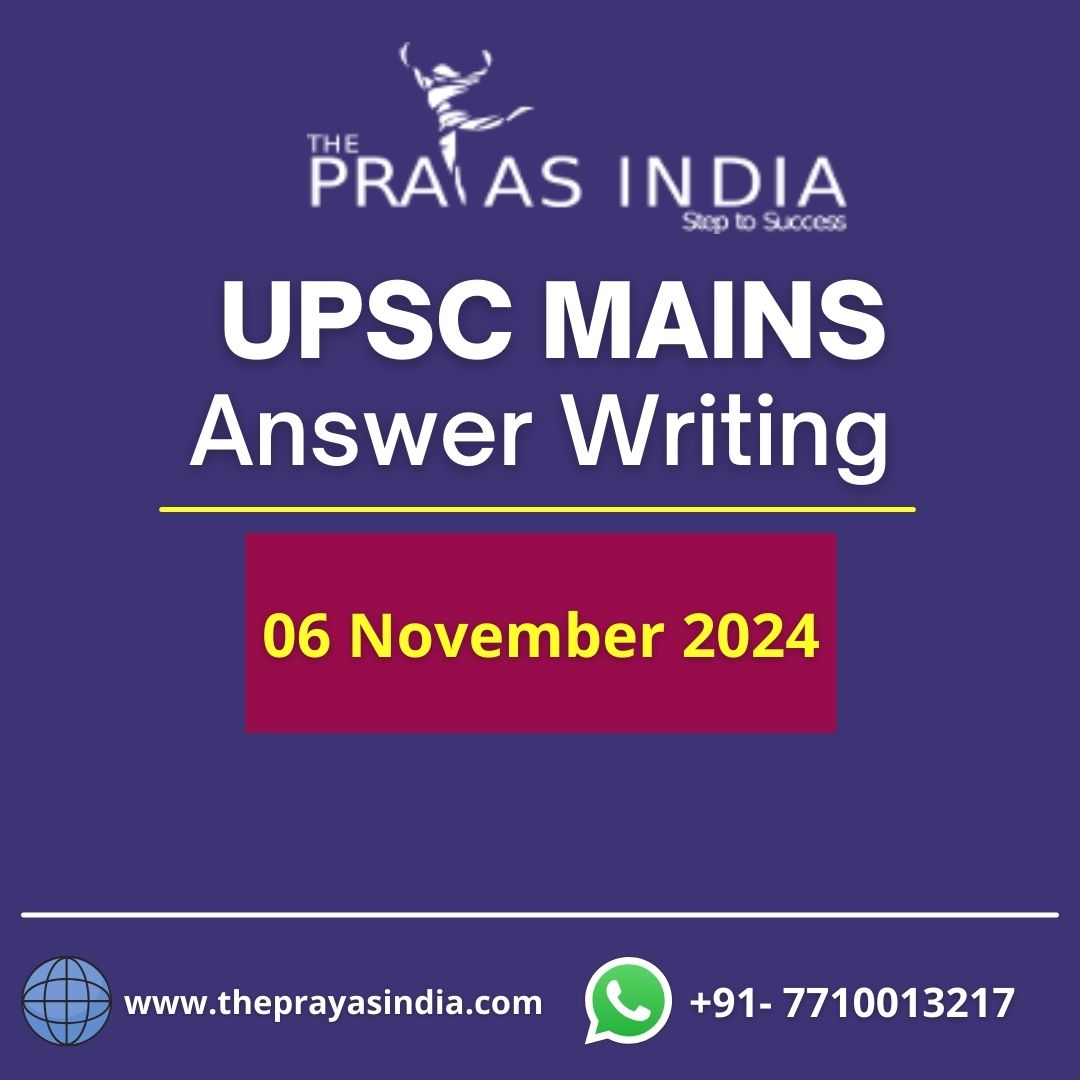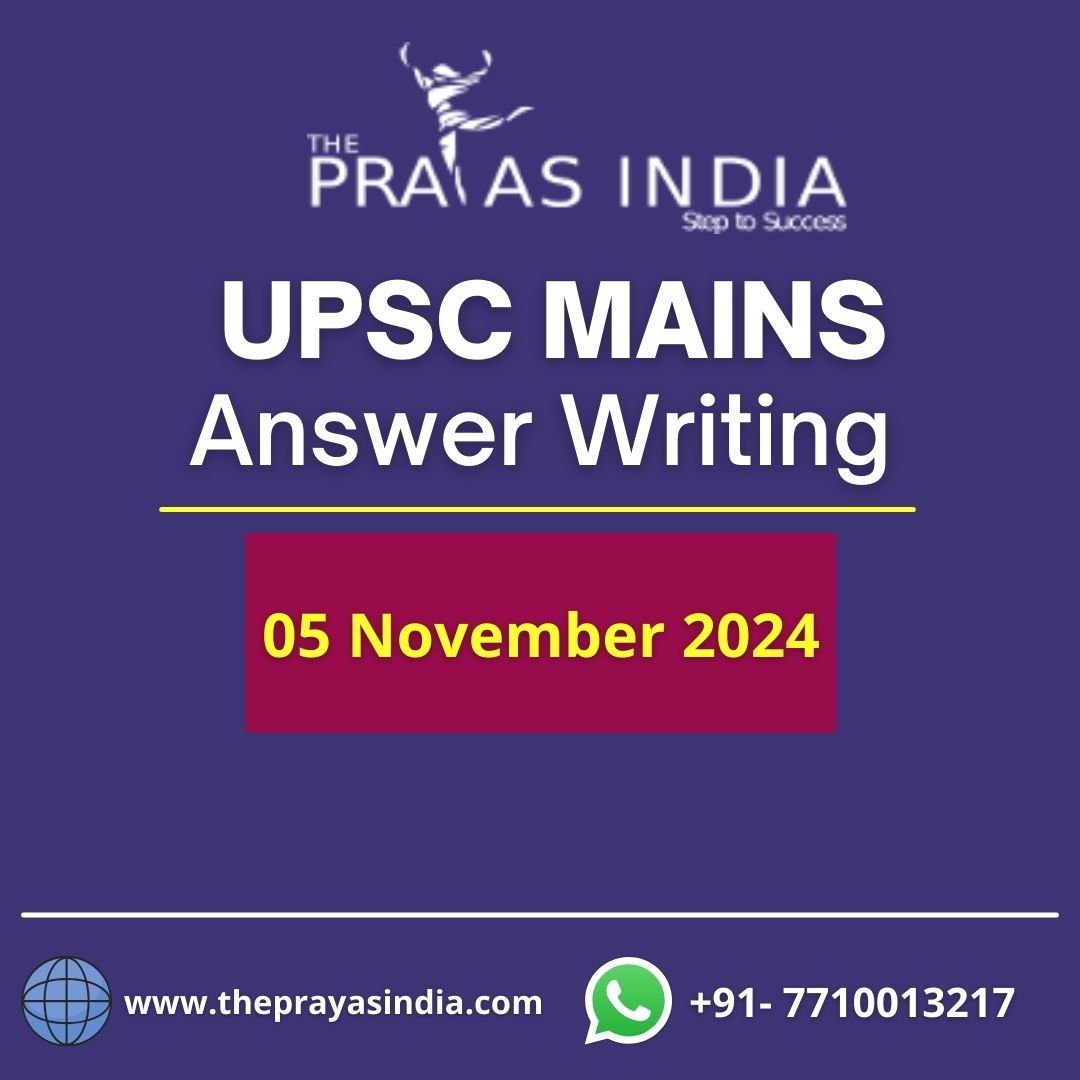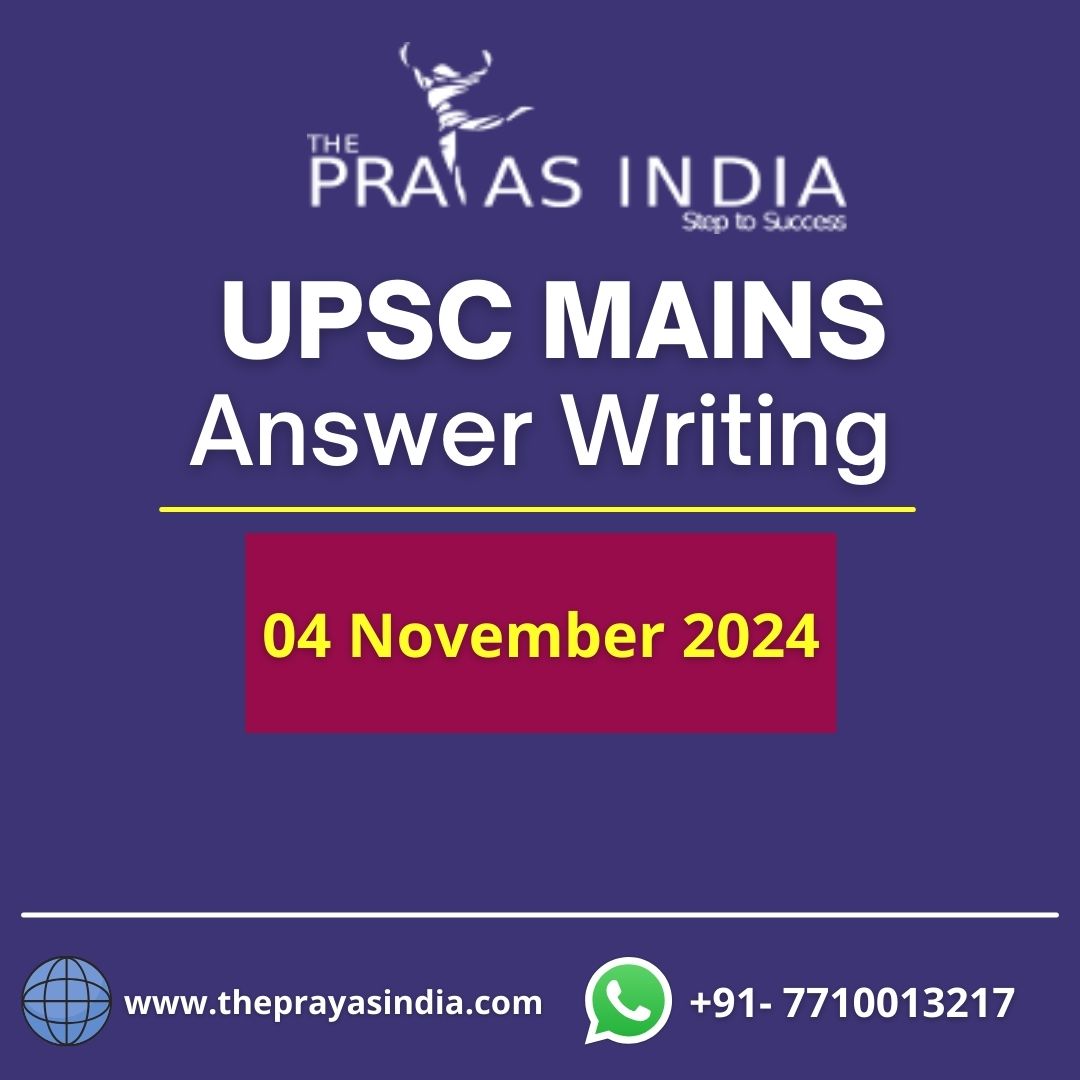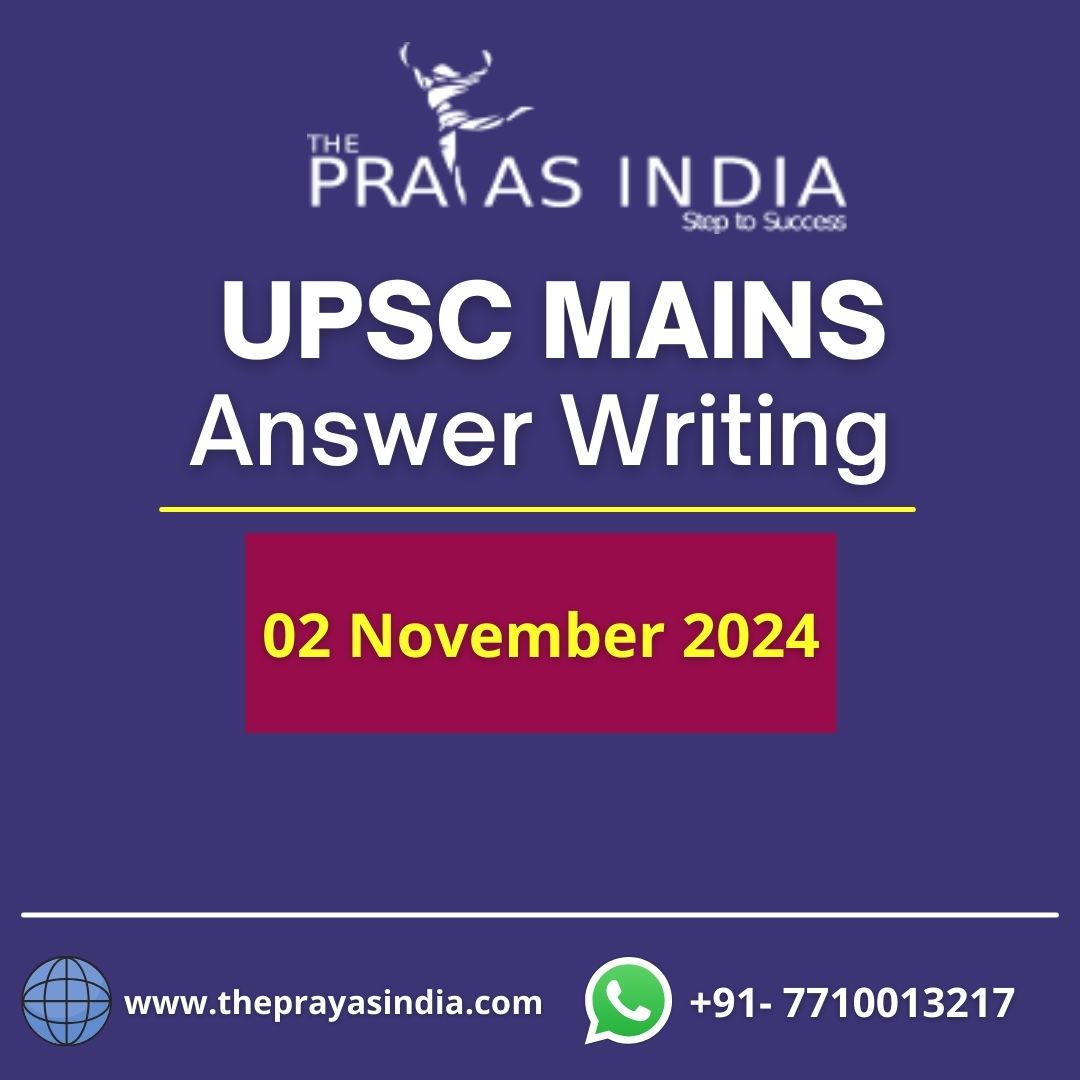MAINS DAILY QUESTIONS & MODEL ANSWERS
Q1. Examine how the partnership between India and the UAE can strengthen regional food security for the global south.
GS II – International Relations
Introduction:
- As countries around the world cope with supply shortages of staple foods, India and the United Arab Emirates are coming together for strengthening food security by creating food corridor and food parks. The UAE is focusing on the twin objectives of food access and readiness to confront supply chain crises and India, the world’s second-largest food producer, is an essential partner in the UAE’s ambition to strengthen food security. The India-UAE partnership stands to benefit from multiple points of convergence and can strengthen food security in the southern rim of Eurasia.
India-UAE capabilities in strengthening regional food security:
- UAE’s investments in the food sector in India: During the I2U2 (India, Israel, the United Arab Emirates and the United States) summit, the UAE committed $2 billion in investment towards constructing food parks in India (in Madhya Pradesh and Gujarat).
- Food security corridor initiative under CEPA: The food corridors to be established under the India-UAE comprehensive economic partnership agreement (CEPA) seeks to address the food security challenge in a holistic manner and aims at achieving three main goals:
- Increasing crop yield in India.
- Enhancing Indian farmer’s incomes by supplying them with high-quality seeds, equipping them with the best possible and emerging agri-tech facilities and marketing their agricultural products at better rates.
- To maintain export quality standards to cater to the South Asian and Middle Eastern markets.
- Development of food processing value chain: Business conglomerates in Abu Dhabi for e.g., the Lulu Group is planning to invest $8 million in setting up cold storage and sorting facilities in the Union Territory of Jammu & Kashmir to facilitate the export of fruits and vegetables grown in the state. This will lead to the development of a food processing value chain and will enhance export capabilities.
- Food assistance to countries facing food crises: India has in recent years acted as a humanitarian provider of food to developing countries. The UAE-India partnership can further strengthen food security in the entire Middle-East North African region.
- This is particularly important as The Food and Agricultural Organizations’ (FAO) report of 2022 stated that of the 50 countries direly affected by food crisis due to the ongoing war, 10 are in the Middle East and North Africa, namely, Lebanon, Egypt, Oman, Syria, Saudi Arabia, Yemen, Tunisia, Iran, Jordan and Morocco.
- Other benefits for the food sector: UAE’s investments in India will improve the certainty of supplies and improve productivity and efficiency in the Indian food sector landscape. For e.g.: The Dubai Multi Commodities Centre, the UAE’s largest free trade zone, launched Agriota, an agri-trading and commodity platform to link Indian farmers to food companies in the UAE.
- Therefore, India’s G-20 presidency offers an opportune moment for both India and the UAE to showcase viable strategies and frameworks that can forge the basis of food security in the Global South. As it sets the global developmental agenda, India can look to leverage and strengthen trade pathways with the UAE to forge a sustainable, inclusive, efficient, and resilient future of food.
Q2. Even after the decriminalisation of Section 377 of IPC by the supreme court, the LGBTQ community is still battling societal prejudices. Discuss the problems faced by the LGBTQ community in India. According to you, what measures should be taken for their greater acceptance in the society?
GS II – Indian Constitution related issues
Introduction:
- Lesbian, Gay, Bisexual, Transgender and Queer (LGBTQ) rights in India have evolved in recent years. The Supreme Court in Navtej Singh Johar vs Union of India judgement struck down part of Section 377 of the Indian Penal Code (IPC) which criminalised homosexuality on grounds that it violated the constitutional right to equality and dignity. However, despite this landmark judgment, the LGBTQ community still faces discrimination and stigma and does not possess certain other rights, such as the right to marriage, inheritance and adoption.
Problems faced by the LGBTQ community in India:
- Socio-economic discrimination: Economic status is directly proportional to the availability of a source of income. LGBTQ community is discriminated against at the workplace, which acts as a barrier to applying for a job. Thus, they are unable to get better pay jobs and are stuck in the vicious circle of poverty.
- Marginalisation and violence: LGBTQ individuals are more likely to face intolerance, discrimination, and even violence due to their sexual orientation. LGBTQ Children face a lot of bullying in schools, colleges etc.
- The plight of women belonging to the LGBTQ community: Lesbian women in rural areas, end up at the bottom of the hierarchy when it comes to basic human rights within the unit of family and village. For e.g.: Village medics and babas often prescribe rape to correct homosexuality. Further, refusal to marry brings more physical abuse.
- Mental health issues: When a person’s gender identity is different from the sex assigned to them at birth, the internal conflict is extreme. This relentless dissonance can result in anxiety, loneliness, and substance use.
- Lack of family support: In a society bound by a rigid set of social and cultural norms that dictate the terms and conditions of education, career and marriage, the lack of family support proves to be a big blow to the mental and physical wellbeing of LGBTQ.
- Social exclusion: The social stigma attached to any non-heterosexual relationship or community results in the social exclusion of LGBTQ and unjust behaviour towards them.
Measures that can be taken to ensure greater acceptance of the LGBTQ community in society:
- Education and awareness: People should be educated about the rights of the LGBTQ community. Further, the government should adopt comprehensive programmes and plans for the LGBTQ community.
- Use of social media and the Internet for sensitization: Social media platforms can serve as a space where LGBTQ youth, in particular, can develop their identities. Coverage of topics and people on TV and OTT platforms that have historically been considered taboo can take the emotional burden off LGBTQ people. It can also sensitize people about gender and sexual orientation.
- Recognising the rights of LGBTQ alike other citizens: Not recognising same-sex marriages, inheritance, adoption, and the absence of LGBTQ-inclusive schools, colleges and workplaces are violative of fundamental rights under Articles 14, 15, 19, 21. Therefore they should be given the same rights as given to other citizens.
- Dismantling discriminatory laws: Social inclusion requires dismantling legislation that criminalizes sexual orientation and gender identity or expression, and that negates a person’s identity.
- Adopting legal framework for LGBTQ: Government should also adopt a robust legal framework protecting LGBT individuals from discrimination in all sectors. Help can be taken in this regard by referring to Yogyakarta Principles on human rights in the area of sexual orientation and gender identity.
- The significance of various supreme court judgements lies in the fact that they have laid down the basic groundwork to confer a host of other civil rights which were earlier not available to the LGBTQ community. However, on the part of society, it is important to create awareness for furthering the process of social inclusion and acceptance towards the members of LGBTQ.




